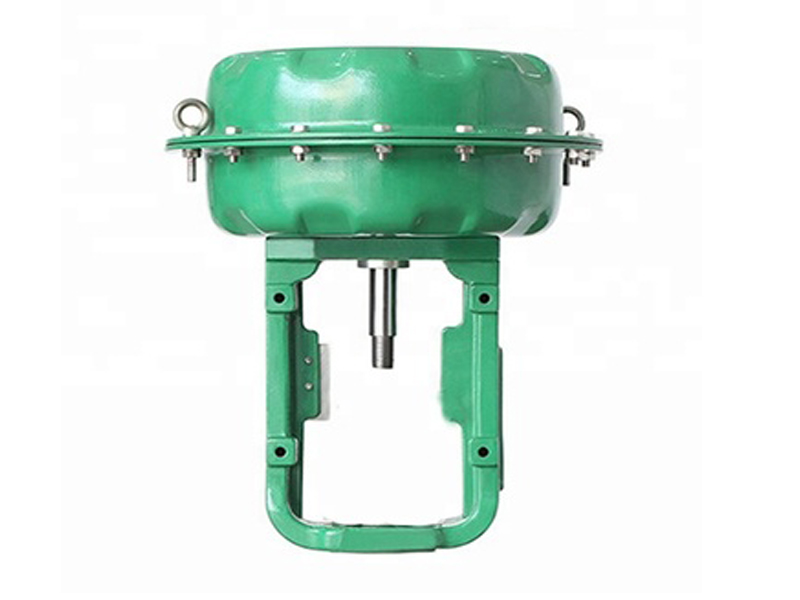The most important part of the pneumatic film regulating valve is the pneumatic actuator, and the pneumatic actuator consists of an executive mechanism and a regulating mechanism. Pneumatic execution agencies include: pneumatic film, pneumatic piston, and pneumatic long stroke; the adjustment mechanism is: valve, gate, regulating valve, etc. There are two types of straight and angle strokes.
The pneumatic film regulating valve has the characteristics of simple structure, convenient operation, reliable use, fire explosion -proof and other characteristics. It is widely used in the production process of alumina. As an important part of the automatic adjustment system, the quality of its working state will directly affect the automatic control process. So do you know what failure does the pneumatic film regulating valve occur? How to deal with it? Let’s take a look with COVNA!
Common faults and solutions of pneumatic film regulating valve
- The regulating valve does not work
The main reasons are as follows: Membrane damage, diaphragm leakage or no signal pressure, or when there is signal pressure, the film thrust is reduced. The regulating valve cannot work due to the reasons such as the valve core and the valve seat or the valve case, and the bending valve.
Solution: Disassembling the head of the membrane and check whether the membrane is damaged. The membrane needs to be repaired or replaced. If there are scratches between the valve core and the valve seat or valve cover, the surface of the valve core and the valve case, the rotation should be polished to smooth. Check whether the valve stem is bent. If the bending is not serious, you need to straighten it on the platform. If the curvature is too poor, the valve should be replaced in time.
- The regulating valve work is normal, but it has no regulation effect.
Mainly the valve core falls off. At this time, the valve stem movement is normal, but the valve core does not move. No adjustment effect. In addition, if the pipeline is blocked, the regulating valve cannot be adjusted.
Solution: Disassemble the valve body, check: Check whether the valve core falls off, find the cause of the drop, and repair it accordingly. If the pipeline is blocked when disassembling the regulating valve, you should contact the manufacturing process workshop in time to clean and clear.
- Slowly adjust the valve or shake the valve stem
The main reasons are as follows: The aging or drying of the sealing filler will increase the friction between the valve stem and the filler, which will cause movement. Slowly or shake; do not change the filler for a long time, and enter the filling. After scraping the valve lever, the valve rod shakes; the valve stem or the valve rod will block the material such as viscosity media in the valve body, causing the regulating valve to fail.
Solution: The regulating valve must be shut down according to the equipment maintenance plan or intermittent equipment. The corresponding maintenance plan shall be removed in time for inspection or offline maintenance. Must be created. Alternatively, the fillers need to be maintained in time according to the condition of the filler to replace the filler. If the valve stem of the backing valve has slight scratches, it can be polished with oil and stones. If the valve lever is severely scratched, the valve rod should be replaced in time. If the large repair test is found to be blocked by materials such as valve stems or valve body, steam, water, etc. should be selected according to the material. Remove the blocking materials.
- Severe corrosion between the valve core and the valve seat, or the cover of hard objects between the valve core and the valve seat
The main reasons are as follows: The damage of severe corrosion or valve core, valve seat cushion and sealing surface between the valve core and the valve seat can cause a large amount of medium leakage. This is one of the common obstacles to regulate valves.
Solution: First of all, the valve is disassembled and checked, and the surface treatment of the valve core and the valve seat that is severely corrosive is treated, or the internal parts such as the valve core and the valve seat are directly replaced to restore the valve to the original state. Seal effect. After the valve is disassembled, the damaged cover surface is filled. If there are hard objects between the valve core and the valve seat, the cover of the valve needs to be restored by rotating and grinding the cover cover. Original seal effect.
- Valve positioner and electric converter auxiliary device
Main reasons: Since the valve positioner and electric converter are the auxiliary devices of the regulating valve, they receive the input signal of the regulator and use their own output signals to adjust the regulating valve. Control, especially the combination of valve positioner and pneumatic valve, forms a closed -loop control circuit, which improves the control accuracy of the regulating valve. Overcoming the friction between the filler and the valve, the acceleration valve, and providing segmented control and changing the flow of the regulating valve.
Solution: Therefore, the regulating valve must match the locator to achieve the ideal adjustment effect. The valve positioner should also be used to improve the positioning accuracy and operating reliability of the regulatory valve to ensure the adjustment quality.
To this end, regular inspections are required to regulate valve auxiliary devices such as valve positioners and electrical converters, or check, debug and maintain the system through regular maintenance.

PDF Get-a-Product Catalogue